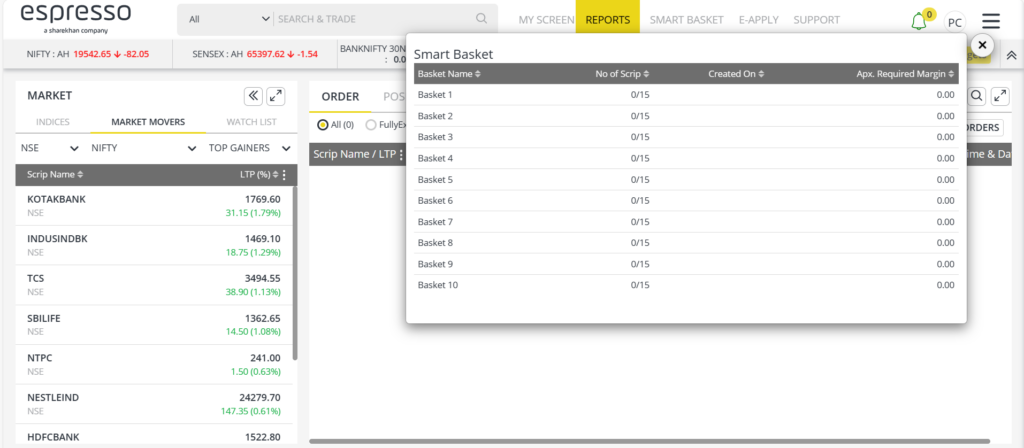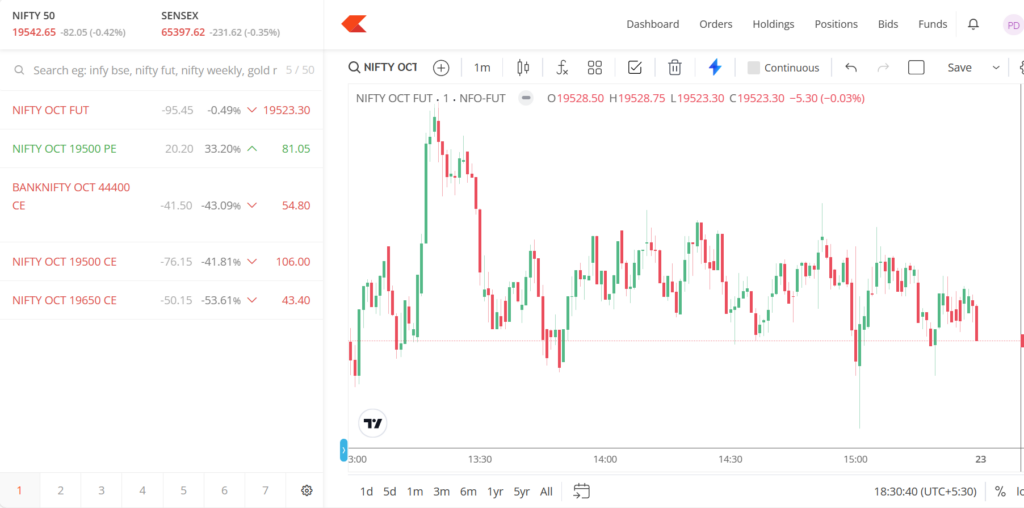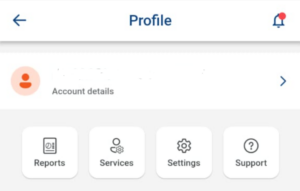Zerodha is the number 1 broker in India right now. Espresso is a subsidiary of one of the leading stock brokers i.e. Sharekhan whose parent company is BNP Paribas. Both companies charge a brokerage of 20 Rs per order but there has to be some differences between the two. I’ve covered the same in the following paragraphs:
Pre-filled watchlists: Espresso is one of the few brokers that offers pre-filled watchlists. For example, the EZ Options watchlist contains a list of Nifty, Banknifty, and Finnifty derivative instruments. You can reduce the list items by changing the strike price levels. You can configure Espresso to auto refresh the items and show the instruments having the strike price difference of 50. The broker can display options of an expiry date of your choice. Pre-populated watchlist is one of the best features of Sharekhan Espresso. Zerodha doesn’t offer such a feature yet.


No brokerage for loss-making trade: Zerodha and other brokers will charge the brokerage for every order you place irrespective of the result you’ve faced after closing the position. Espresso will charge fees only for trades that gave you profit. For example, if you’ve placed 30 orders out of which 14 were loss-making ones, you’ll have to pay brokerage for the 15 orders only. If you’re a Zerodha user, you will have to pay the brokerage for 30 orders.
Option chain: Sharekhan Espresso has a customizable option chain. You can configure it to hide certain columns. The application supports the following columns:
- OI Change%, IV, OI, performance, OI Lot.
- Ask price/quantity, Bid price/quantity, % Change, Time val, etc.
You can hide any of the above columns by clicking on the gear icon and deselecting the checkbox of your choice. The broker can also display and generate option chain graphs.
Zerodha doesn’t have an option chain module of its own. It loads Sensibull’s one. Like Espresso, Sensibull OC supports many columns. You can see the same only on the Sensibull website.
Reports: The reporting data is very important. Although both firms i.e. Zerodha and Espresso have reports section, I have found the latter’s reports interface more intuitive. The reason for the same is the Reports menu. If you move the mouse cursor on it, you will find these five options – order, position, holding, limit and EOD. If you click on the EOD option, you will be redirected to another page. This page will give you access to past data. The other three menu items will load not do so. They will show only the intraday data.
Money withdrawal: Espresso is quicker than Zerodha when it comes to payouts. The firm deposits the amount you’ve withdrawn from the trading a/c to the bank a/c on the same day. Zerodha will do the same before the start of the next day’s trading session.
Charts: Zerodha supports two charting platforms – TradingView and ChartIQ. You can change the platform by clicking on the profile icon/user ID, clicking the My Profile menu and choosing the appropriate checkboxes in the “chart setting” section. Espresso web and mobile application ships with the TradingView library only. Both brokers have integrated TradingView premium charts with their applications.
Option margin: If you’re an intraday player who is looking for a broker that offers margin for purchasing options, Espresso is a great fit for you. The application supports MIS+ order types. While creating this order, you will have to specify two things – stop loss price and book profit price. If you fill out these two fields, Espresso will show the required margin which would be far less than the amount you’ve in the trading account. Zerodha doesn’t support MIS+ (or similar) feature yet.
From the above paragraphs, we can conclude that Espresso is more feture rich than Zerodha.


